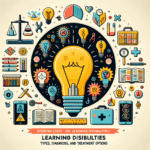
In an era where data serves as the lifeblood of organizations, understanding how to transform raw data into actionable insights is crucial. Organizations today are swimming in a sea of data, but not all of it is useful. The ability to sift through this overwhelming amount of information and make informed decisions is what distinguishes successful businesses from their competitors. At the heart of this transformation lies inferential statistics. In this article, we explore From Data to Decisions: The Role of Inferential Statistics in Business Intelligence, and how it can empower organizations to make more informed choices, paving the way for strategic advancements.
Understanding Inferential Statistics: The Basics
Before we dive deep into its applications in business intelligence, let’s clarify what inferential statistics entails. Unlike descriptive statistics, which simply summarizes data, inferential statistics allows analysts to make predictions and generalizations about a population based on a sample. This is particularly valuable in business, where it’s often impractical to gather data from an entire population.
Key Components:
- Sampling: Selecting a representative subset of data.
- Hypothesis Testing: Making inferences about population parameters.
- Confidence Intervals: Estimating the range in which a population parameter lies.
By utilizing these components, businesses can transition From Data to Decisions more effectively.
The Importance of Inferential Statistics in Business Intelligence
1. Enhancing Predictive Analytics
Predictive analytics relies heavily on inferential statistics to forecast future trends. Businesses can use historical data to make educated predictions about outcomes, which is indispensable for strategic planning.
Case Study: Netflix
Netflix uses inferential statistics to predict viewer preferences based on sample data gathered from user behavior. Through rigorous analysis of viewer choices, the streaming giant tailors its recommendations and content creation, enabling it to stay ahead in a fiercely competitive market.
Analysis: This case illustrates the transformational power of inferential statistics in shaping business models and guiding decisions related to content and user engagement.
2. Driving Decision-Making with Data-Backed Insights
Organizations leverage inferential statistics to derive insights that guide key business strategies. When companies utilize data samples to make general statements about a larger group, they can make informed decisions that significantly reduce risks.
Case Study: Starbucks
Starbucks regularly employs surveys and consumer feedback (samples) to infer customer satisfaction across locations. Data-driven insights inform everything, from product offerings to store placements.
Analysis: Starbucks exemplifies how inferential statistics can align operational strategies with consumer expectations, ultimately enhancing customer satisfaction and loyalty.
3. Measuring and Improving Performance
Inferential statistics enables companies to analyze performance metrics, helping them to identify areas for improvement. With appropriate statistical techniques, businesses can determine which aspects of their operations yield the highest returns.
Example Table: Performance Metrics Analysis
| Metric | Sample Size | Inferential Statistic Used | Result |
|---|---|---|---|
| Sales Growth Rate | 500 | T-test | Significant increase |
| Customer Retention | 1000 | Chi-square test | No significant change |
| Employee Satisfaction | 300 | ANOVA | Improvement in one region |
Through ongoing analysis of performance metrics, businesses can adjust strategies in real-time, contributing to effective resource allocation.
4. Identifying Market Opportunities
Inferential statistics assists in market research, enabling businesses to uncover emerging trends and consumer needs. Through the analysis of sample data, organizations can identify opportunities for product launches or service improvements.
Case Study: Amazon
Amazon uses inferential statistics to analyze customer purchase behavior, which helps them to identify shifts in market demand quickly. This data informs inventory decisions and marketing strategies.
Analysis: Amazon’s approach highlights the critical link between inferential statistics and market agility, showcasing how timely decisions cultivate competitive advantages.
5. Analyzing Risk and Uncertainty
In business, uncertainty is a constant companion. Inferential statistics helps organizations quantify risks, allowing them to make more informed decisions that seek to minimize negative outcomes.
Case Study: Airlines
Airline companies use inferential statistics to analyze factors like weather patterns and customer demand, which help them establish pricing models and flight schedules while considering risks.
Analysis: By effectively applying inferential statistics, airlines can optimize operations and ensure higher profitability despite the inherent uncertainties of the industry.
Integrating Inferential Statistics in Business Intelligence Tools
To effectively leverage inferential statistics, organizations must integrate it into their business intelligence (BI) tools. Here’s how:
Data Visualization
The clarity offered by data visualization tools can transform complex statistical data into understandable insights. Graphical representations of inferential statistics can help stakeholders grasp essential trends easily.
Real-Time Analysis
Cloud technologies enable real-time data collection and analysis, making it possible for companies to derive immediate insights. Businesses can make instant adjustments based on statistical outcomes, a critical factor in fast-paced environments.
Training and Development
To fully harness the power of inferential statistics, companies should invest in training employees in statistical techniques and data analysis. A workforce well-versed in these concepts can leverage them effectively in decision-making processes.
Conclusion: Transforming Data to Decisions
Navigating the complex landscape of data-driven decisions is no small feat. Yet, with the application of inferential statistics in business intelligence, organizations can make sense of raw data and transform insights into meaningful actions. The journey From Data to Decisions is not just about gathering data; it’s about creating a culture that values analytics and evidence-based decision-making.
It’s clear that organizations leveraging inferential statistics can outpace their competition, innovate faster, and remain relevant in an ever-changing marketplace. The potential is immense if businesses commit to understanding and applying these statistical techniques effectively.
Frequently Asked Questions (FAQs)
1. What is the difference between descriptive and inferential statistics?
Descriptive statistics summarizes data, while inferential statistics makes predictions and generalizations about a population based on sample data.
2. How can inferential statistics help in market research?
Inferential statistics allows researchers to draw conclusions about a larger population from a smaller sample, helping businesses identify market trends and consumer preferences.
3. Is inferential statistics applicable to all types of businesses?
Yes, inferential statistics can be valuable across various industries, from retail to healthcare, facilitating informed decision-making regardless of the business type.
4. What skills are needed to effectively use inferential statistics?
Knowledge of statistical software, data analysis techniques, and a foundational understanding of statistics are crucial for effectively utilizing inferential statistics.
5. Can small businesses use inferential statistics?
Absolutely! Small businesses can leverage inferential statistics to make informed decisions without needing extensive data. Simple surveys or customer feedback can yield valuable insights.
As businesses continue to navigate a data-driven world, the ability to move from data to actionable decisions will differentiate those who thrive from those who merely survive. Embracing the role of inferential statistics in business intelligence is not just strategic; it is essential for sustainable growth and competitive advantage.

















